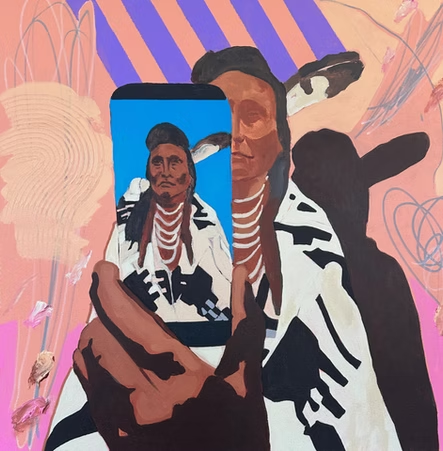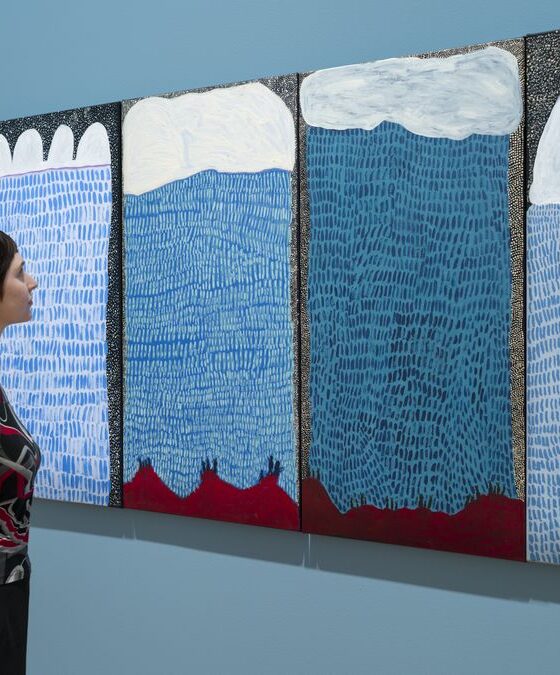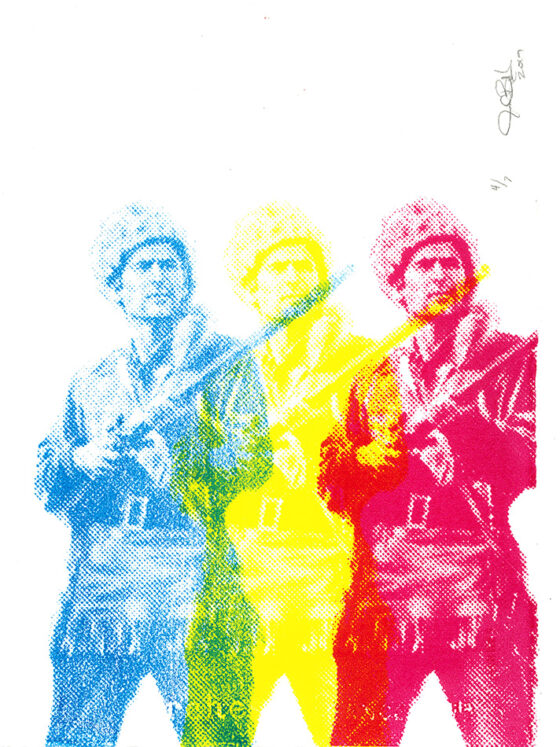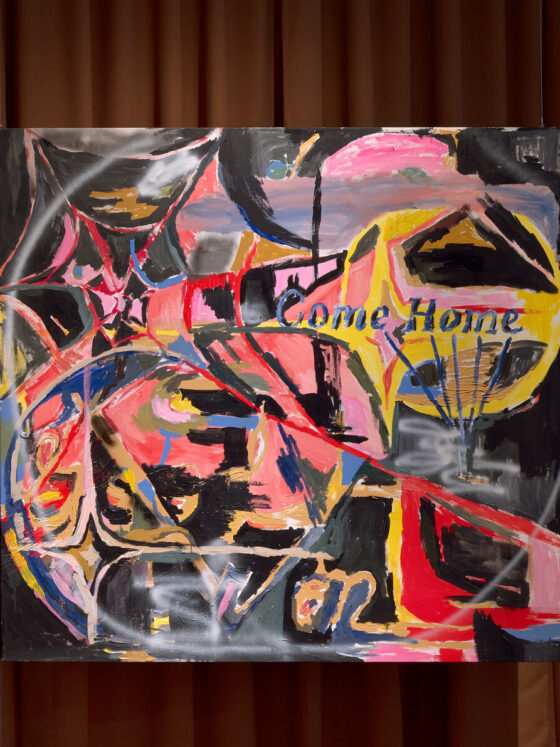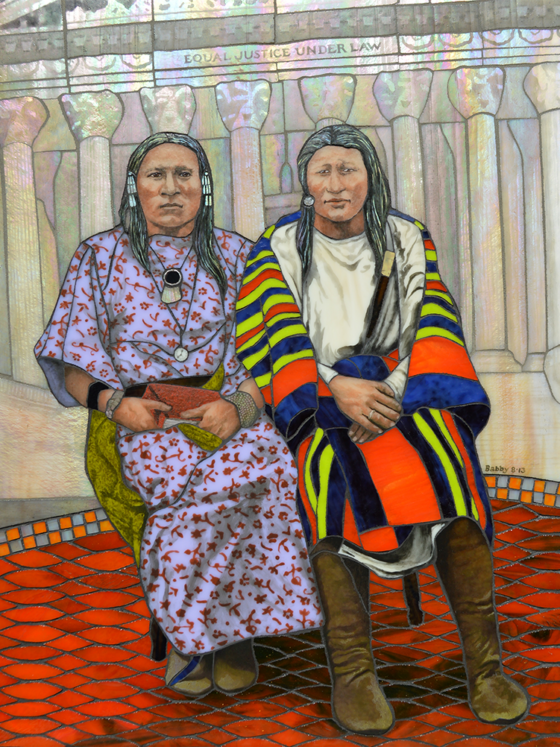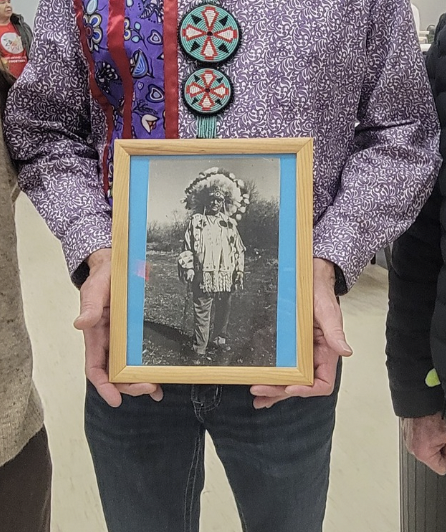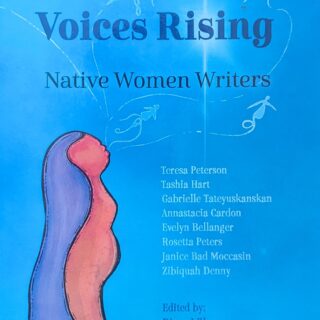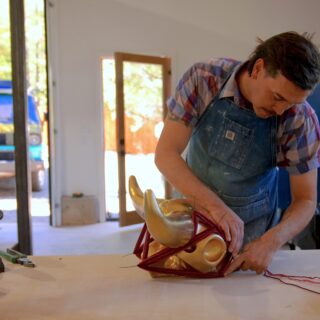“Native Prospects: Indigeneity and Landscape” Opens May 4

The Thomas Cole National Historic Site announced in February that a new exhibition titled “Native Prospects: Indigeneity and Landscape“, curated by Scott Manning Stevens, PhD / Karoniaktatsie (Akwesasne Mohawk), will open on May 4 at the historic site in Catskill, NY. The exhibition juxtaposes an Indigenous approach to the articulation of their homelands and the environment with the American landscape paintings of Thomas Cole, which are rooted in European tradition. Cole’s influence led him to be recognized as founder of the 19th-century American art movement now known as the Hudson River School of landscape painting.
The exhibition’s curator, Scott Manning Stevens, PhD / Karoniaktatsie (Akwesasne Mohawk), is Associate Professor of Native American Studies and English at Syracuse University, where he is also Director of the Native American and Indigenous Studies Program and Founding Director of the Center for Global Indigenous Cultures and Environmental Justice. The exhibition and the accompanying publication are organized by the Thomas Cole National Historic Site.
The Indigenous approach to land underscores a mutual relationship of nurturing and caretaking. As Dr. Stevens writes, “For many Indigenous peoples, including the Haudenosaunee, it is our relationship with the land that is of paramount importance. That relationship teaches us the ethics on which our societies are built.” He continues, “any abstract portrayal of the land and its features in our visual culture is meant to call to mind those relationships—relationships that we have a sacred duty to remember and maintain.” The approach to nature exemplified by Cole’s one-point perspective landscape paintings is rooted in a European tradition that reflects a perceived right to dominate and rule over nature, as seen for example in an oft-quoted passage from Genesis: “Be fruitful and multiply, and replenish the earth, and subdue it: and have dominion over the fish of the sea, and over the fowl of the air, and over every living thing that moveth upon the earth.”
“Native Prospects: Indigeneity and Landscape” presents 19th-century paintings by Thomas Cole featuring Native figures, in context with Indigenous works of historic and cultural value, and artworks by contemporary Indigenous artists: Teresa Baker (Mandan/Hidatsa), Brandon Lazore (Onondaga, Snipe Clan), Truman T. Lowe (Ho-Chunk), Alan Michelson (Mohawk member of the Six Nations of the Grand River), and Kay WalkingStick (Cherokee). Bringing the 19th century into conversation with our present moment, this cross-cultural exhibition offers profound interpretations of American art and land, expands conventional definitions of “land” and “landscape,” and highlights Indigenous artistic creation.
Much of the critique of 19th-century American landscape painting has focused on the absence of communities of the original inhabitants of the land. Yet communities of Native peoples had lived throughout these regions for millennia, constructing villages and clearing woods for agricultural fields, as they supported their communities from the resources of the land and its waterways.
Unlike most of his artistic circle, Thomas Cole included Native figures in many of his landscape paintings, though most often alone. Dr. Stevens interprets these figures as what art historians refer to as “staffage.” In Cole’s case, these figures served to provide a sense of scale, geographic location, and arguably time period. Scale was often related to the sublime aspects of certain natural features such as a waterfall or mountain, while identifying a figure as Native American placed the viewer in an American locale, and finally, having a lone Native figure in the landscape, dressed in a stereotypically Indigenous manner, pointed to the country’s past, with the implicit and harmful presumption that Native Americans were no longer present in this region. Cole’s Native figures demonstrate no ethnographic acuity on the artist’s part, beyond romanticized stereotype.
“Native Prospects” reflects this aspect of the landscape painting tradition while examining representations of land by Native peoples, both in the distant past and today. While Indigenous societies in North America did not have a tradition of representational landscape art, the land was featured abstractly as it related to Native communities in various designs, some decorative and others mnemonic. Contemporary Native visual artists have inherited a variety of legacies of representing the land, a fraught subject for many Native artists because of the dispossession of Indigenous peoples from the land and the peril facing the land historically and today.
“Indigenous societies flourish when we recognize that our relationship to the land is as much determined by responsibilities as it is by rights,” said exhibition curator Scott Manning Stevens, PhD. “We maintain our collective right to protect the land and all that’s on it, and we do so with our custodial duties toward the environment in mind. For many Indigenous peoples the European landscape tradition in art presents viewers with a false sense that North America was an uninhabited wilderness waiting to be settled or that the beauty of nature can be depicted with a sense of nostalgia or in an elegiac light, given the inevitability of the presumed advance of ‘civilization’ with its towns, cities, and industries. Contemporary Native artists have inherited this tradition but feel compelled to respond from their own perspectives and be mindful of their traditions. For some that is delivered as a critique and for others it is a prompt to revisit the ancestral views of their people.”
“We are excited to present this important exhibition that re-examines the way Cole has portrayed Native American people in his paintings, most often as a lone warrior in the woods – a stereotype that has been firmly imprinted in our consciousness for over two centuries,” said Elizabeth B. Jacks, Executive Director of the Thomas Cole National Historic Site. “This exhibition and publication are a major expansion of our commitment to bring forward a much longer history of the land and landscape. We are so grateful to Dr. Stevens for bringing his superb scholarship to the Thomas Cole Site and to the contemporary Indigenous artists for sharing their visionary work with our audiences.”
The exhibition is accompanied by a fully illustrated catalogue with original essays by the curator and such other scholars as Gabrielle Tayac, PhD, (Piscataway) and Joseph Mizhakiiyaasige Zordan (Bad River Ojibwe). Additionally, the publication will feature writing and plates by featured artists Teresa Baker (Mandan/Hidatsa), Brandon Lazore (Onondaga, Snipe Clan), and Kay WalkingStick (Cherokee), as well as texts on Alan Michelson (Mohawk member of the Six Nations of the Grand River), by Clémence White, and Truman T. Lowe (Ho-Chunk), by Patricia Marroquin Norby, PhD, (Purépecha), Associate Curator of Native American Art at the Metropolitan Museum of Art.
The exhibition opens on Saturday, May 4, at the Thomas Cole National Historic Site and will run through Sunday, October 27, 2024. Curator Dr. Scott Manning Stevens will present a Curator’s Talk on Saturday, May 4, at 2:30 pm, followed by an opening reception from 4:00 to 6:00 pm.
Native Prospects: Indigeneity and Landscape is made possible through support from the Terra Foundation for American Art.


